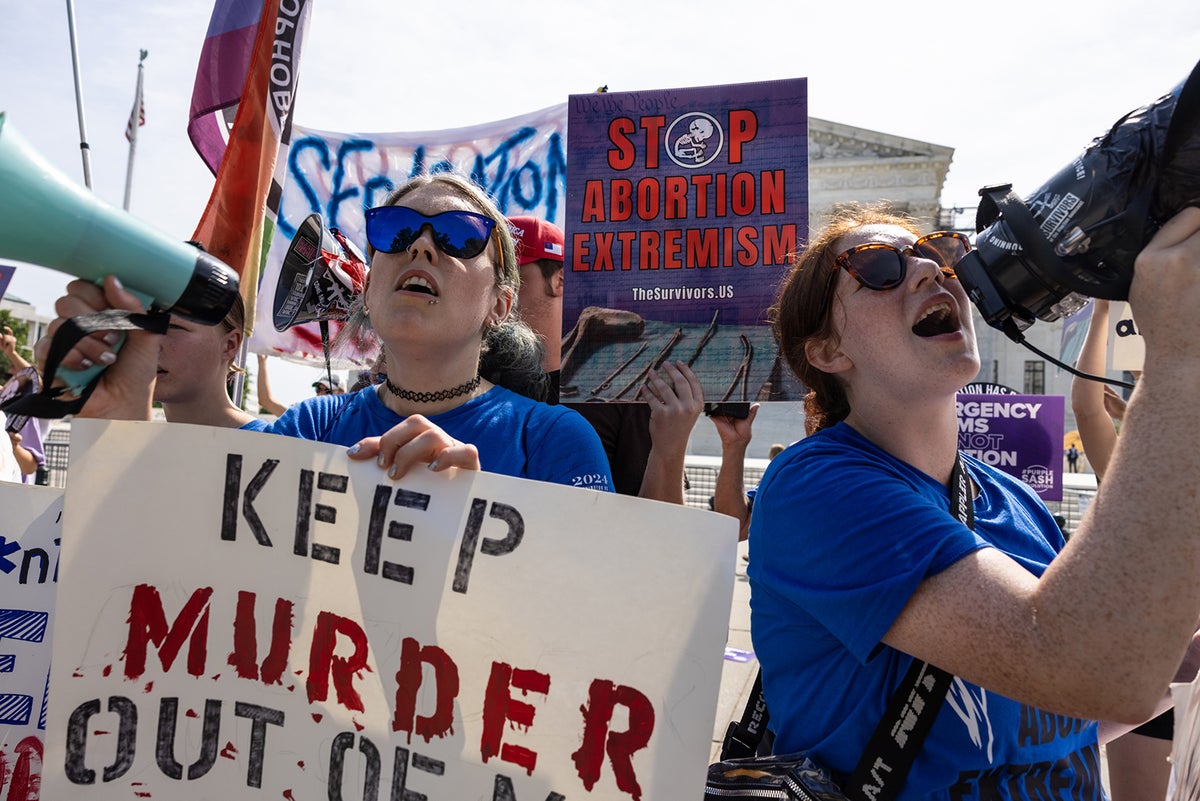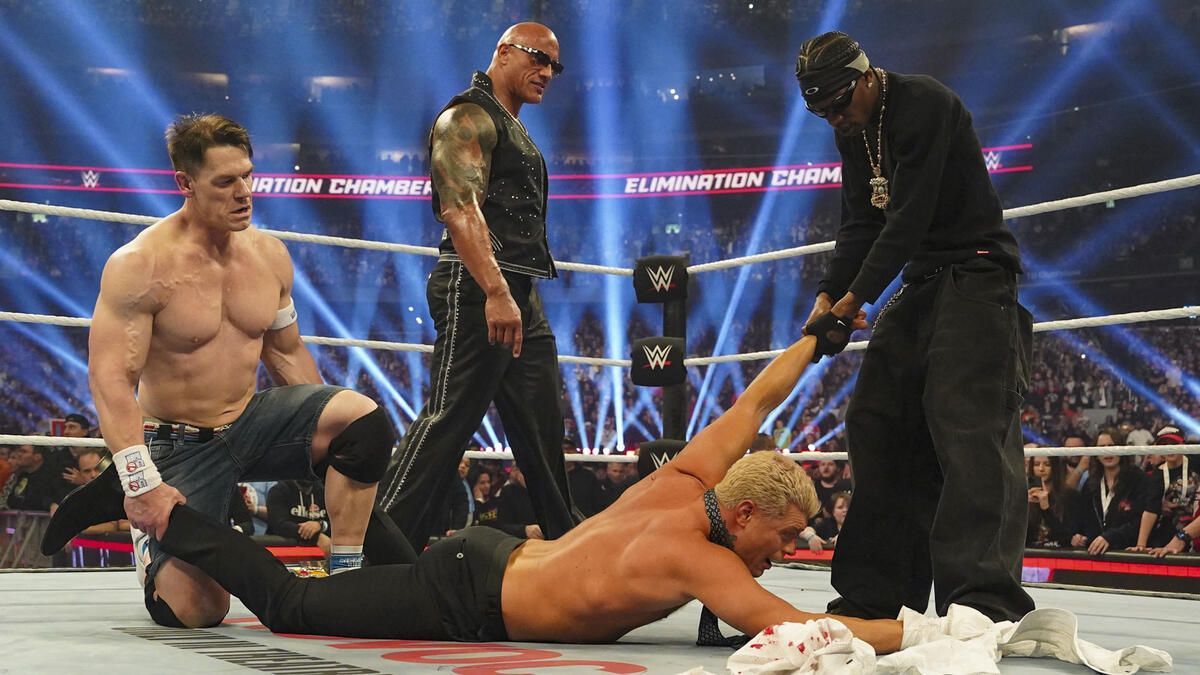The Real Supreme Court Endgame for Abortion Foes

Sign up for the Slatest to get the most insightful analysis, criticism, and advice out there, delivered to your inbox daily. Before the Supreme Court overturned Roe v. Wade, conservative judges and politicians argued that the court was to blame for the polarization of the abortion issue in the first place. Roe, the argument went, ruled out compromises that might have cooled off the debate. And nearly three years ago, when the Supreme Court undid the right to choose abortion in Dobbs v. Jackson Women’s Health Organization, the justices picked up on this claim too—suggesting that restoring abortion decisionmaking to voters and their elected representatives might make the conflict less ugly. Today, the federal right to choose is gone. States are free to set their own abortion policies. In some instances, voters can bypass politicians and approve ballot initiatives. And yet with Roe a thing of the past, the nation’s abortion divide only seems deeper. Slate receives a commission when you purchase items using the links on this page. Thank you for your support. States have eschewed compromise measures and passed sweeping bans. Penalties under these laws are sometimes more severe than those in place before Roe. Physicians are refusing to treat patients with potentially life-threatening complications because they worry about inadvertently violating the law. States are launching a new war about travel, with jurisdictions passing shield laws that claim to protect residents from criminal prosecution and conservative states experimenting with the idea that they can punish their own citizens for facilitating an abortion in places where the procedure is legal. Rather than allowing voters to express preferences about abortion through ballot initiatives, some Republicans are experimenting with strategies that make it harder for voters to have a say. And ironically, it is abortion opponents who spent decades railing against the antidemocratic federal courts who have invested the most in the federal judiciary, litigating about the fate of the Comstock Act, access to abortion pills, and much more. Overturning Roe has polarized the debate partly because most Americans deeply oppose the Dobbs decision. But the end of Roe did little to demobilize the anti-abortion movement. Many abortion foes rallied to the fight for fetal personhood before the Supreme Court intervened and saw constitutional protection for the unborn, not the mere elimination of an abortion right, as the endpoint of their struggle. To understand the past and future of the American war over reproduction, then, we must tell the story of the fetal personhood movement. It may be tempting for supporters of abortion rights to see fetal personhood as nothing more than a tactic for activists whose real ambition is simply to ban abortion or control sexuality and reproduction. There is no denying that some personhood arguments emerged and changed for strategic reasons—not least in the 1960s, when what was at the time a Catholic movement looked for a way to avoid faith-based arguments and broaden its base. But for more than half a century, the fight for fetal personhood was a singular point of agreement in a fractious movement. Personhood arguments came and went in Congress, the Supreme Court, and the front pages of the nation’s newspapers. But within the anti-abortion movement, claims for fetal rights never went anywhere. Ideas about personhood remained a constant in the strategy sessions and private correspondence of those who define themselves as pro-life. That personhood arguments had an emotional pull for their proponents does not mean that nothing lies below the surface of beliefs about the fetus. Nor does it mean that personhood had a stable definition. Indeed, personhood partly captivated so many conservatives because its meaning could and did change. Arguments around fetal personhood reflected other convictions about race, sex, motherhood, religion, and the possession of a soul. Within the anti-abortion movement, sharp disagreements emerged about what personhood meant and how to enforce it. But we will fail to understand conflicts over reproduction in the United States if we dismiss the anti-abortion movement’s personhood arguments as nothing but a strategic ploy, or see personhood as nothing more than an argument for banning abortion. Personhood today is shorthand for fetal rights, and fetal rights are synonymous with the criminalization of abortion. The history of struggles over fetal personhood suggests that there was nothing inevitable about this carceral turn. Even today, it is possible to imagine a vision of fetal rights less focused on criminalization. Perhaps personhood could even accommodate those who think abortion should be legal—or even a protected right. Fully sketching this vision is beyond the scope of this book. But deemphasizing criminalization would be a good starting point. Stronger protections against domestic violence during pregnancy, better sex-discrimination laws, paid family leave policies—and more support from the government for women and children, including those whose families have few resources—might be ways to express respect for fetal life while honoring the equality, dignity, and autonomy of pregnant patients. Fetal personhood has been a fluid concept, one that reflected and reinforced changing ideas of liberty and equality in other areas of the law. In advocating for personhood, abortion foes insisted that a fetus was a unique, separate individual and as such, had fundamental rights. In other ways, however, personhood arguments changed. Those advocating for personhood drew on ideas about desegregation, consumer protection, sex discrimination, affirmative action, sex and pregnancy outside of marriage, civil rights, corporate power, religious liberty, criminal punishment, the rights of civilians in wartime, and the shape of the welfare state. Arguments for personhood thus offer a window into how socially conservative Americans understood discrimination across issues and decades. Personhood arguments first took shape in response to a push for abortion reform in the 1960s. Changing sexual mores and concern about the discriminatory effects of criminal bans had fueled a push to loosen existing restrictions. Abortion opponents sought to defeat reform and eventually insisted that more liberal laws were themselves unconstitutional. But personhood became much more than a reaction to reform. By the 1960s, personhood proponents challenged the idea that those who had suffered past injustice had the most urgent claim to constitutional redress. Equality, personhood proponents stressed, was less about lifting up those at the margins than it was about restoring long-standing protection for the weak. The ultimate victim of discrimination in America, abortion opponents maintained, was the fetus. By the 1980s, many in the movement insisted the unborn was a victim of violent crime. To treat the victims of violence as equal to the rest of us required the criminalization of abortion—and perhaps other acts that harmed fetuses. Some anti-abortion advocates insisted on mercy for some, women first among them. But they agreed that there could be no equality, no justice in America, until abortion was a crime. Proponents of personhood also joined an effort to transform the role played by history or tradition in constitutional interpretation. They resisted the argument that the nation’s traditions were fluid, even as the idea of fetal personhood itself had consistently changed. Like other conservative allies, personhood champions insisted that the court should recognize rights that were deeply rooted in a fixed tradition—and that Americans should look back to past eras that were more moral. None of this is to say that most personhood proponents were distracted from their quest for fetal rights. But if abortion opponents wanted protections for the fetus, what they proposed would have had deeper consequences. Personhood arguments have already changed how the court approaches the recognition of rights under the due process clause. If abortion opponents are successful, they will also change how the court understands equality under the law in the context of race, sex, and sexual orientation. More than anything, the story of fetal personhood is a searing reminder of where Americans find themselves in the war over reproduction. Everyone understands that the effects of the Dobbs decision will take years to fully grasp, but Dobbs may feel like a final conclusion. It appears to be the result that Americans opposed to abortion yearned, marched, and voted for. It is true that Dobbs is the end of one story, one about what it means to lose a constitutional right. But the anti-abortion movement has never been just a fight to eliminate the right to choose abortion. It has always been a fetal personhood movement. History tells us that personhood has had different meanings, but one thing has remained constant: If fetal personhood became a part of our constitutional law, the meaning of equality would change for everyone, and in contexts well beyond abortion itself. Once, Dobbs struck many as unimaginable. But if history teaches us anything, it is that Dobbs is just the beginning. This article has been lightly adapted from the book Personhood: The New Civil War over Reproduction, by Mary Ziegler.

















